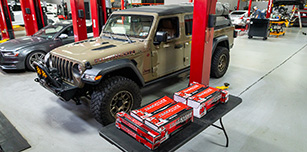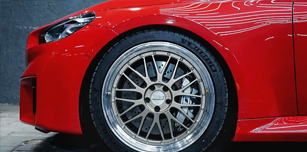Images Courtesy of Radium Engineering
Throughout my travels, I often get into discussions with enthusiasts at car shows, racing events, Cars & Coffee, and even in random Facebook group posts. One topic that’s always hanging around is the fuel system and its capabilities. People are looking for input regarding what they need, why they need it, and how they can prevent their car from having issues at the track. My go-to response is to always have more than you need, but I typically refrain from giving a detailed recommendation as I am not an engineer. I just know I’ve seen my fair share of blown-up stuff because of a lack of fueling capability.
Over the last couple of years, as OE engines like the Coyote and LS/LT brothers have become more powerful, I’ve seen lots of them swapped into road racers and drift cars among others. And even though those factory fuel systems might be perfectly adequate for a typical road-going car, throw them into a situation when high load forces are acting on the fuel tank and you’re basically guaranteed to see the engine deprived of its necessary fuel supply.

Ultimately, the fuel system trumps all when it comes to sustaining performance. More so than your turbocharger, or your transmission, or even the driver. Because without the necessary volume and pressure supplied by your fuel system, there will be no whooshy noises, killer exhaust note, or record-setting lap times.
That’s where Aaron Suchy, co-founder of Radium Engineering, comes into the picture. He has graciously agreed to take part in Front Street’s One Question segment this month. Radium is a manufacturer of fuel system components, from surge tanks—which Aaron talks about below—to fuel rails, fuel pulse dampers, fittings, and even oil system catch cans.
What are the issues fuel starvation can cause in a racing application, and how can the racer prevent it from happening?
Aaron Suchy, Radium Engineering: Fuel starvation can be a big problem in vehicles with poorly baffled OEM fuel tanks and can lead to several issues during racing. In a naturally aspirated application, fuel starvation results in hesitation coming out of a corner, exactly when you need to accelerate! For a vehicle with forced induction, those effects can be even worse. A starved fuel system results in lean air/fuel ratio conditions when the engine is under load, this can cause catastrophic internal engine damage from detonation.
To prevent fuel starvation, a racer can do several things. The most basic quasi-solution is to always run with a full tank of fuel. While this makes sense, there are a couple issues with this. First, engines consume fuel at a MUCH higher rate when used in competition. This means your full tank of fuel will be down to half tank or less in no time at all, and by the end of your session, you will be experiencing fuel starvation again. Secondly, carrying a maximum volume of fuel is HEAVY. At about 6 pounds per gallon for gasoline, that is a lot of extra weight to carry around in a 12 gallon tank, especially if the vehicle is only using 3 gallons per session, for example. For highly competitive racing, this extra weight can be a significant penalty.

A better solution is to use a device that is specifically designed to prevent fuel starvation from happening. A fuel surge tank is a universal device that can install in most any vehicle. It creates a “relay system” for fuel. The submerged pump in the factory tank no longer feeds the engine, but is instead is used to move fuel to the surge tank, with the excess overflowing back to the OEM tank. Inside the surge tank resides the fuel pump (or pumps) that are now feeding the engine. This system ensures that the important pumps feeding the engine are always fully submerged in fuel even If the OEM fuel pump becomes starved. This solution has proven itself over and over again as effective in real competition use.
Thanks to Aaron for taking time out of his busy schedule to answer our question! Check out previous installments of One Question content right here.


















